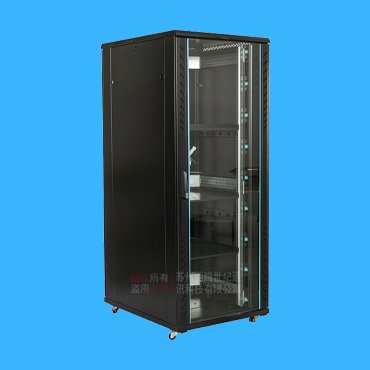Your Best Manufacturer of PLC splitter in China since 2010
ISO 9001 certificated factory, Available in full range of
- Mini steel tube PLC splitter
- PLC splitter loaded in cable tray
- ABS module PLC splitter
- Rack mounted PLC splitter
- Wall mounted PLC splitter
- PLC Splitter loaded in LGX Box
- PLC Splitter in 250 um fiber
What is a PLC Splitter
Full name of a PLC splitter is Planar lightwave circuit splitter; By using silicon optical waveguide technology combined with precise and reliable optical fiber array for packaging, It used for power coupling and redistribution of optical signals. it has some main features of his insensitive wavelength, small in size, wide range of working wavelength, good optical uniformity, etc. It widely used in EPON & GPON, FTTX projects.
PowerTel & its associated factory has an annual production capacity of 10 million all types of PLC splitter based on 160 sets of coupling system and 30 assembly lines.
Please contact us for some standard PLC splitters listed below and some tailored splitters for your special applications.
PLC Splitter by its application area
By its application area, it can be divide into Mini steel tube PLC splitter,PLC splitter loaded in LGX box,ABS module PLC splitter,Rack mounted PLC splitter,Wall mounted PLC splitter,PLC splitter loaded in cable tray,PLC Splitter in 250 um fiber etc.
Low PDL & insertion loss
Available from 1*2 to 2*128
High return loss and Good repeatability
Available from 1*2 to 2*128
Excellent channel-to-channel uniformity
Available from 1*2 to 1*64


SC/LC connector on your request
Available from 1*2 to 2*64

PLC Splitter assembled in patch panel
Available from 1*2 to 2*64

Available from 1*8 to 1*32
Widely used in LAN, WAN and Metro Networks

2 inlet ports, 16 outlet ports
Wall or pole mounted

Product Feature Box




Our PLC Splitter Certificated bt Telcordia
Our PLC Splitters have been tested & certificated by Telcordia to ensure that they meet the criteria set out in Section 6 of GR 1209 and GR 1221 Core requirements for passive optical components. We are confident that our splitter assembly is reliable and will provide reliable service throughout its lifetime.


Huge Production Capacity of Our PLC Splitter
Monthly production for PLC Splitter is 500,000 pcs, plus our huge inventory, which allowed us to ship your ordered PLC spiltter in 3 days.
Package Supply of PLC Splitter, Patch Cord Cable,Patch Panel
Based on our different assembly lines, we are able to provide you a package supply of PLC Splitter, Patch cord cable, fiber joint enclosure, thus will save your time to negociate with various suppliers and save your costs a lot.

Related Product
Types of Fiber Optical Splitter
In accordance with its working principle, optical splitters can be categorized into two types: fused taper type and planar waveguide type, it is PLC Splitter.
The fused tapered product is formed by side melting two or more optical fibers; PLC Splitter is a micro optical element type product, which adopts photolithography technology,Forming optical waveguides on dielectric or semiconductor substrates to achieve branch distribution functions. And changing the fiber radius to achieve different branch sizes; PLC splitter is manufactured using semiconductor processes such as lithography, etching, and development. The optical waveguide array is located on the upper surface of the chip, and the branching function is integrated on the chip, which means equal branching is achieved on one chip; Then, the multi-channel fiber array at the input and output ends of the chip are coupled and packaged separately.
Advantages of a PLC Splitter
(1) loss is not sensitive to optical wavelength and can meet the transmission needs of different wavelengths. (2) Uniform light distribution allows for uniform distribution of signals to users. (3) Compact in structure and small in size, it can be directly installed in various existing junction boxes without leaving a large installation space (4) There are many branching channels for a single device, which can reach over 32 channels (5) Low cost of multiplexing, more branching, more obvious cost advantage.
The manufacturing flows for PLC splitters is as following steps:
(1) Connect the 6.328 micron red light source first for preliminary debugging and observation during light transmission.
(2) fiber array to maximize the received optical power value at the wave output end, and the optical power values of the two sampling channels should be as equal as possible (that is, automatically adjust the output fiber array to achieve precise alignment with the waveguide input end, thereby improving the overall coupling efficiency)
In the coupling alignment process above, the PLC splitter has 8 channels and each channel needs to be accurately aligned. Due to the manufacturing process of the waveguide chip and fiber array (FA) ensuring the relative position between each channel, it is only necessary to align the PLC splitter with the first and eighth channels of the FA simultaneously to ensure that other channels are also aligned, which can reduce the complexity of packaging. The most important and technically challenging encapsulation operation mentioned above is the coupling alignment operation, which includes two steps: initial and precise alignment. The purpose of the initial adjustment is to enable the waveguide to pass light well; The purpose of precise alignment is to accurately locate the optimal optical power coupling point, which is achieved through a program that searches for the maximum optical power. Docking optical waveguides requires 6 degrees of freedom; 3 translations (X, Y, Z) and 3 rotations( α、β、 g) To ensure the good performance of the packaged waveguide device, the translational accuracy of alignment should be controlled below 0.5 micrometers, and the rotational accuracy should be higher than 0.05 degrees.
At the connection part of the PLC splitter chip, in order to ensure the mechanical strength and long-term reliability of the connection, the entire glass plate is glued. The fiber optic array is mechanically processed into a V-shaped groove at a spacing of 250 microns on the glass plate, and then fixed here. The average maximum cumulative interval error for producing an 8-core fiber array is 0. 48 microns, with extremely high accuracy. In the connection between PLC splitter chips and fiber optic arrays, as well as the assembly process of various components, in order to reduce assembly time, ultraviolet curing adhesive is used. The fiber optic connection interface is a key to maintaining long-term reliability, and a combination of moisture resistant and peel resistant fluoride epoxy resin and silane chain material adhesive should be selected. In order to reduce reflection on the end face, an 8 ° grinding technique is used.









